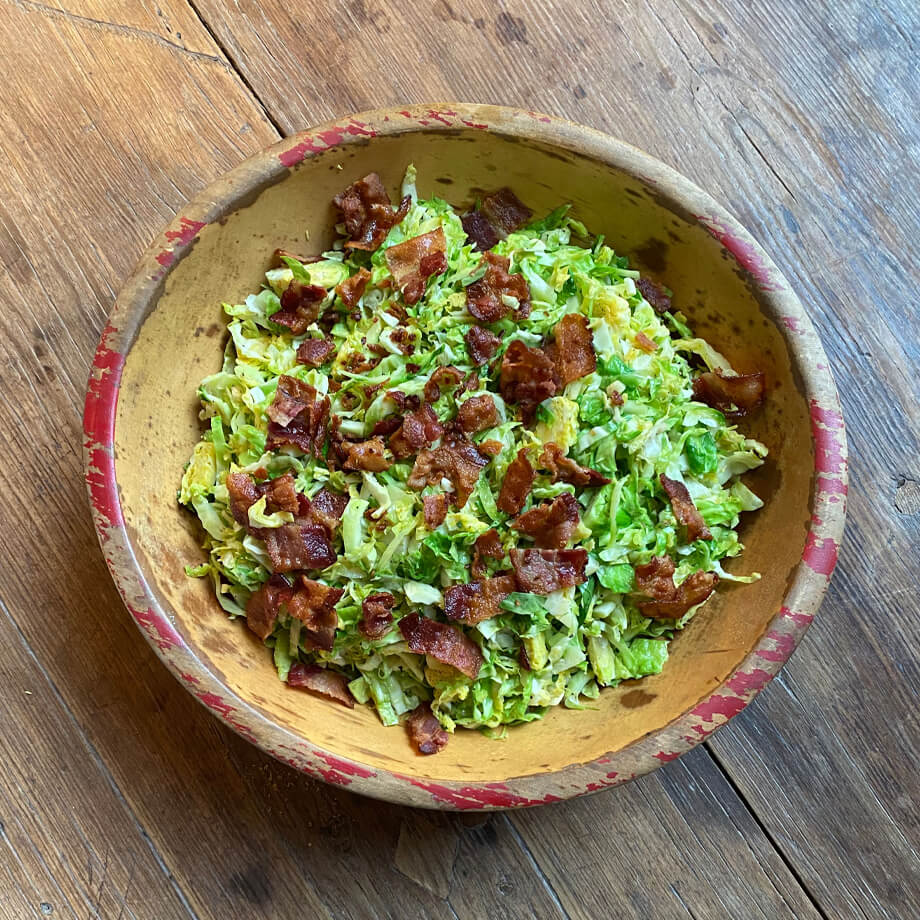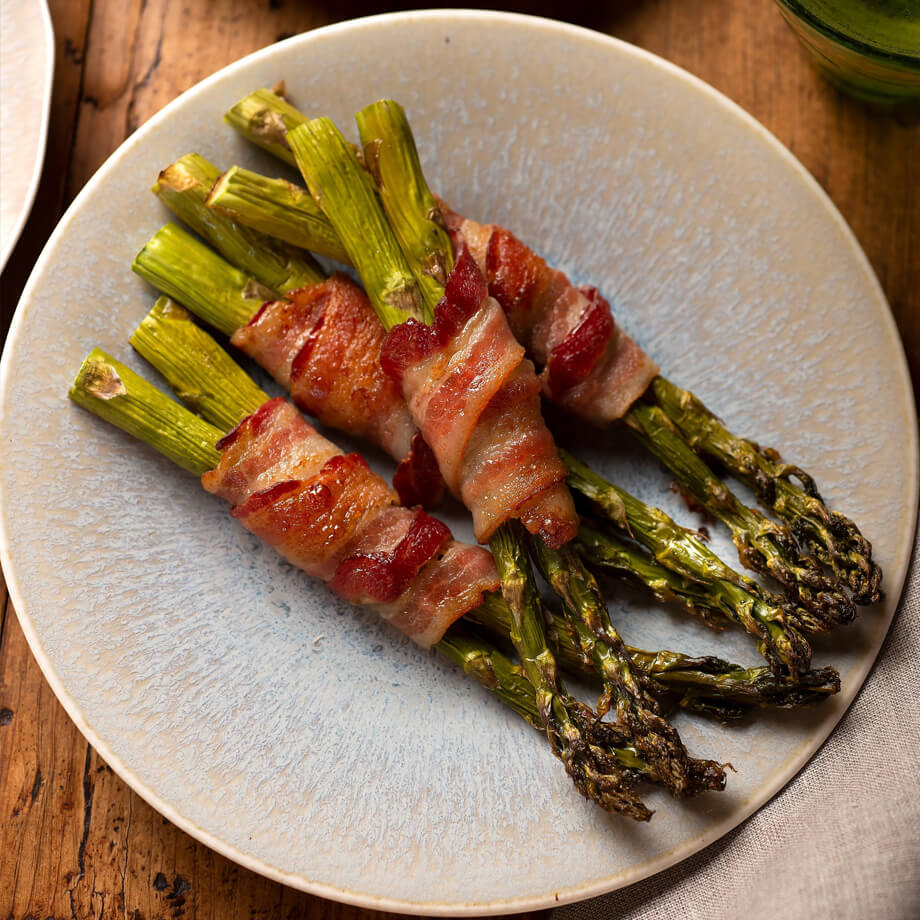As people pay more attention to labels, learn more about nutrition, and try to stay healthy, “sugar-free” has become a popular word in the food industry.
AHA says that men should not eat more than 36 grams of sugar a day and women should eat no more than 25 grams a day. And it’s easy to see how a soda with 32 grams of sugar could put you over the daily limit very quickly. But sugar is hidden in many foods that you might not expect, like peanut butter, pasta sauce, yogurt, and soup.
For many, like those with diabetes or pre-diabetes, having a sugar-free option is essential. And if you’re trying to follow a special diet or weight loss plan, like the paleo or keto diet, you may not know how much sugar is in some of your favorite foods. For example, bacon! Is this popular breakfast food high in sugar, or is it okay to eat if you’re trying to avoid sugar? We’ll talk more about this below. Table of Contents.
Bacon is one of the most beloved cured meats around. The smoky, salty, fatty slices of pork belly are a staple on breakfast plates and burgers across America. But while traditional bacon is cured with just salt, modern commercial bacon also contains sugar, which contributes to its characteristic sweetness and brown crust when fried. This has led many to wonder: is sugar cured bacon actually sweet?
As a long-time bacon lover and amateur charcuterie enthusiast I decided to dig into the details to find out if sugar truly makes bacon taste sweet. Here’s what I discovered about sugar’s role in curing bacon and how it affects the final flavor.
A Brief History of Bacon Curings have been curing pork into bacon for centuries using salt. Salt penetrates deep into the meat, drawing out moisture and preserving it. Before refrigeration, salting and smoking meats was the only way to preserve them.
Sugar as part of the curing process is a much more recent development. It came into widespread use in American bacon production in the 1920s.
Prior to this, bacon was cured for months just using salt, which resulted in a very salty, dense final product. Sugar speeds up the curing process considerably, reducing the time down to just days.
The sugar also balances out some of the harsh saltiness and adds subtle sweet notes. It contributes to bacon’s beloved “sweet and salty” flavor profile that we know so well today.
How Sugar Curing Works
Curing is the process of preserving meat by heavily salting it or soaking it in a salt brine solution Traditional cures were made from just salt Modern cures also contain sugar, nitrites, and sometimes spices.
Meat is about 75% water. Salt absorbs and binds to the water molecules through osmosis. This dehydrates the meat making it impossible for bacteria to thrive.
Sugar assists this process in a couple key ways:
-
Draws out moisture: Sugar is hydrophilic, meaning it attracts and absorbs water. Like salt, this pulls moisture out of the meat.
-
Offsets harsh saltiness: Sugar balances out some of the intense salty flavor from the cure. It provides a touch of sweetness and complexity.
-
Browns and crisps: Sugar speeds up the maillard reaction, which is the chemical reaction between amino acids and sugars that creates golden-brown crispy edges when meat is cooked.
-
Feeds flavorful bacteria: Sugar feeds naturally occurring lactic acid bacteria on the meat’s surface. These bacteria generate tangy, fermented flavors during curing.
Curing Methods That Use Sugar
There are a few main methods used to cure bacon with sugar:
-
Dry rubbing: Coating the raw meat in a mix of salt, sugar, and spices.
-
Wet brining: Submerging the meat in a water solution with salt, sugar, and other ingredients.
-
Injecting: Injecting the curing solution deep into the meat with needles. More common commercially than at home.
The dry rub method is the easiest to do at home. It just involves rubbing the salt/sugar mixture thoroughly over the pork belly, letting it sit refrigerated for 4-7 days, rinsing off the cure, then optionally smoking the bacon.
Wet brines require meticulously measuring out ingredients and maintaining the right temperatures and brine concentrations. Injecting requires special equipment.
Does Sugar Curing Make Bacon Taste Sweet?
While sugar adds subtle sweetness and color to bacon, it does not make properly cured bacon taste overtly sweet or candy-like. The salty, smoky, umami flavors still dominate.
Sugar makes up a relatively small ratio of the total cure, around 15-20% typically. The majority is still salt, which provides the main preservation and most of the flavor.
Overly sweet bacon is a sign of improper curing. It means there was not enough salt used to balance out the sugar. Or the bacon was not cured long enough for the salt to fully penetrate.
Properly cured artisan bacon will have a complexity of flavor with sweet, salty, and savory notes. But you should never bite into a slice and think it tastes like candy! The sweetness is subtle.
Signs Your Bacon is Under-Cured
Since sugar speeds the curing process, it can be tempting to not cure the bacon long enough. Signs your bacon is under-cured and could taste too sweet include:
- Very soft, pliable texture
- Extremely sweet taste
- Lack of saltiness
- Discoloration when cooked
- Off flavors and odors
Bacon cured for only 1-3 days will often exhibit these traits. For the best results, dry cure bacon for at least 5-7 days refrigerated to allow the salt time to fully penetrate and balance the sweetness.
Storing and Cooking Sugar Cured Bacon
Once cured, bacon can be frozen or refrigerated for several weeks. Freezing is best for long term storage. Thaw frozen bacon gradually in the fridge before cooking.
For the best texture and flavor, cook sugar cured bacon over gentle heat. Medium or medium-low works well. Cook too hot and the sugars will burn, giving a bitter taste.
Look for the bacon to turn deep golden brown. The sugars will caramelize, creating crispy edges without burning.
The Takeaway on Sugar Cured Bacon
While sugar adds mild sweetness to bacon, properly cured bacon should not taste overtly sweet or candied. The complex salty, smoky, umami flavors developed during curing still dominate.
Sugar accelerates curing while also balancing saltiness and improving texture. Follow proper dry curing methods and give the salt time to fully penetrate. This way your homemade bacon will have a balanced sweet and salty depth without crossing into candy territory.
The next time you bite into a slice of artisan bacon, pay attention to the nuances. You may notice a touch more sweetness than commercial brands, but it will still be recognizably savory, smoky bacon. The sugar contributes complexity, not pure sweetness.
So is sugar cured bacon sweet? In moderation, yes – but sweet is just one element of cured bacon’s irresistible flavor profile. Used right, sugar transforms ordinary pork belly into a far more crave-worthy treat.

Bacon on a Paleo Diet
The paleo diet isn’t as strict about getting the right amount of macronutrients every day. Instead, it focuses more on the kinds of foods that are eaten. Paleo gets its name from the era that its primary foods come from: the Paleolithic Era, between 2. 5 million and 10,000 years ago. The people would have hunted and gathered these foods, such as grass-fed meat, fish, fruits, vegetables, nuts, and seeds. Foods like grains, dairy, legumes, and yes, sugar, are all avoided on a paleo diet.
Like keto, the paleo diet focuses on lower-carb options as well, but hones in especially on sources of protein, with healthy fats included. An example of a balanced macronutrient breakdown on a paleo diet would include around 30-45% protein, 30-35% carbohydrates, and 20-40% fat on a daily basis.
Therefore, bacon can absolutely be a healthy part of this diet. If you’re following a paleo diet, you should definitely stay away from sugar, unless it’s a paleo-approved sugar like in honey, coconut, maple, or fruits like dates. So think twice before buying bacon with added sugar and select a sugar-free variety instead.

Bacon on a Keto Diet
If you’re following the keto (or ketogenic) diet plan, you have the “high-fat, low-carb” mantra down pat. Keto is known for having very low amounts of carbs (less than 50 grams a day) and very high amounts of fat (up to 145 grams a day). Those on the keto diet should get a moderate amount of protein every day, about 75 grams. After looking at this list of macros, it’s clear that bacon is a great food for the keto diet!
Bacon is a great food to include in a keto breakfast because it has a moderate amount of fat (about 6 grams per two slices) and almost no carbs (less than 1 gram per three slices). It also has more protein, which helps you get the right amount of protein every day and feel full for longer after eating protein.
So if you’re on a keto diet, you can feel confident in saying yes to bacon for breakfast. But keep in mind that any extra sugar in the bacon will count toward your daily net carb limit. For instance, if the food has 1 to 2 grams of sugar, that amount will be counted as a carbohydrate on the nutrition label. Therefore, it’s often better to choose a sugar-free bacon.

Easy Homemade Bacon | How to Cure Your Own Bacon at Home
FAQ
What does bacon cured with sugar mean?
Is mild sugar cured bacon sweet?
What is sweet cure bacon?
Why add sugar to bacon?
How do you sugar cure Bacon?
Sugar-curing bacon is not a complicated process. Obtain fresh pork bellies that have been chilled to 42 degrees F within two days of slaughter. Trim the pork bellies with a knife to create a uniform shape for curing evenly. Rub the dry cure onto the pork bellies, making sure to coat all sides.
What is the difference between coconut sugar and brown sugar?
Brown sugar is obtained from cooking sugarcane juice and retains most of its nutrients, such as iron, folic acid, calcium, zinc and magnesium. Coconut sugar is obtained from the sap found in the middle of the coconut tree. The sap is heated to be dehydrated and turned into crystals. Coconut sugar has a greater sweetening power than brown sugar (and equivalent to refined sugar), which requires less use.
Is bacon cured or uncured?
There isn’t such a thing as “uncured” when it comes to bacon. “It’s misleading,” says Moskowitz. “Most things that are labeled as uncured have had celery salt added to it.” Celery salt, which contains naturally occurring nitrites, cures the bacon. Bacon labeled as uncured was cured without artificial nitrites like pink salt.
Can you cook bacon with brown sugar?
Both light and dark brown sugar work well here, but keep a close eye on the bacon if you opt for the latter; the higher molasses content of dark brown sugar can cause the bacon to brown more quickly. Line the pan. The best way to prepare candied bacon is in the oven, and to do that you’ll need a rimmed baking sheet.
